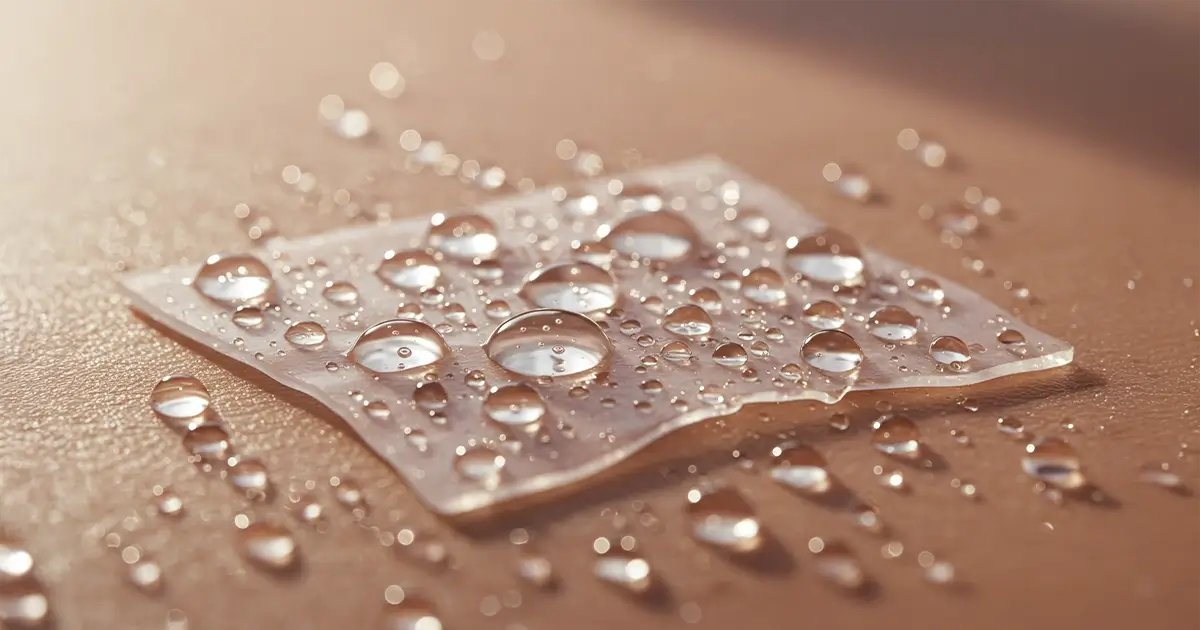Thirsty cheeks, flaky elbows, and that tight forehead feeling all boil down to one thing: how well our skin holds on to water. Today I explain the biology of hydration, share nutrition and product strategies that work, and reveal sneaky daily habits that either flood or drain your moisture bank, all in a breezy 9-minute read.
Why Hydration Matters on a Cellular Level
Your outermost layer, the stratum corneum, is often compared with a brick wall. Keratin-rich corneocytes play the bricks while ceramides, cholesterol, and free fatty acids act as the mortar, keeping the "wall" intact and flexible. When water escapes, gaps appear, irritation seeps in, and you feel rougher than a two-day-old loofah.
One study published in the Journal of Dermatological Science measured transepidermal water loss (TEWL) in healthy adults and found that even a 10 percent rise in TEWL bumped up inflammatory cytokines within eight hours. Translation: dehydration kicks off irritation faster than gossip spreads in a group chat.
Hydration also affects the enzyme activity that sheds old cells. Well-moisturised skin keeps desquamation orderly, meaning fewer dull patches and less congestion. Imagine a sushi conveyor belt; water keeps it gliding smoothly, whereas dryness brings it to a crunchy halt.
Key takeaway: water is not a surface accessory. It underpins barrier integrity, inflammatory control, and normal cell turnover, making hydration the groundwork for every glow-up routine you read about online.
Natural Moisturising Factors (NMF)
NMF refers to the mix of amino acids, salts, lactate, and urea produced inside corneocytes. Think of it as the skin's in-house humidifier. Humectant serums work best when NMF is robust, which is why replenishing both is a win-win rather than an either-or game.
Environmental stress (UV, cold wind, AC) can deplete NMF. A hospital review from King's College London showed that nurses working long shifts under low humidity lost up to 18 percent of NMF in one week. If hospital air can do that to trained professionals, imagine the daily commute on a packed train.
Inside-Out: Nutrition and Water Intake
Hydration starts at the dinner table. While eight glasses of water a day is a neat slogan, actual needs hinge on age, climate, and caffeine habits. I aim for clear-to-pale straw coloured urine as the simplest checkpoint.
Skin cells rely on the surrounding extracellular matrix for water, and that supply depends on systemic circulation. In a controlled crossover trial, athletes who drank 2 litres of water plus electrolytes retained 15 percent more skin hydration than those on plain water alone, according to Mayo Clinic Proceedings. Sodium and potassium pull water into tissue, acting like tiny bouncers ushering moisture through cell doors.
Healthy fats matter too. Omega-3s strengthen cell membranes, reducing passive water loss. When I forget my chia-seed smoothie for a week, my lips tell the tale before any mirror does - cracked, sensitive, and begging for balm.
- Hydration heroes: cucumbers, watermelon, strawberries, bone broth, olive oil, salmon.
- Electrolyte boosters: coconut water, pumpkin seeds, spinach, plain yoghurt.
- Limit list: ultra-processed snacks, excessive alcohol, and more than four coffees without added water.
Supplements: Friend or Hype?
Hyaluronic acid capsules promise plumper skin, but systemic absorption varies wildly. Current evidence remains limited, so I treat them as optional rather than essential. If you crave a supplement, fish-oil soft-gels deliver more consistent benefits by supporting lipid layers that hold water in place.
Topical Strategies: Humectants, Emollients, Occlusives
If internal hydration is the reservoir, topical care is the dam wall keeping every drop from leaking. The recipe looks complicated online, yet boils down to three ingredient families.
Humectants draw water. Glycerin, panthenol, and low-molecular-weight hyaluronic acid act like tiny sponges, grabbing moisture from deeper layers or humid air. Always top them with an emollient or occlusive or they might grab water and run late-night.
Emollients smooth gaps. Squalane, ceramide-rich creams, and jojoba oil soften the rough edges between corneocytes, making skin feel velvety. Emollients also help humectants sit evenly rather than pooling in odd patches.
Occlusives seal the deal. Petrolatum, shea butter, and mineral oil form a semi-permeable blanket that blocks 98 percent of water loss for up to eight hours, according to a classic study by the American Academy of Dermatology. Great at bedtime, less great under midday makeup.
- Morning combo: lightweight humectant serum + ceramide lotion + SPF.
- Evening combo: hydrating essence + squalane oil + thin layer of petrolatum on dry spots.
If you are unsure of your baseline skin category, skim my earlier guide Understanding Your Skin Types to Customize Daily Care. Matching ingredient weights to skin type prevents the classic mistake of drowning oily T-zones or starving dry cheeks.
Layering Order Myths
Serum before cream often works, yet viscosity is not the only rule. Charge, pH, and active concentration matter. Sometimes a water-in-oil emulsion slides better under a light gel. I test placement on my forearm before committing face-first, because surprises belong in birthday parties, not routines.
Remember that sunscreen counts as an occlusive. Piling petrolatum on top can make you feel like cling film on a summer picnic. Give each layer one full minute to settle, then see whether you really need extra sealing.
Environment, Lifestyle, and Tech: External Factors That Steal Your Moisture
Humidifiers, blue-light filters, and silk pillowcases flood my social feed. Some work, some drain wallets faster than steam drains bathrooms. Let's separate humid fact from hype.
Temperature swings: moving from cold streets into overheated rooms causes rapid TEWL spikes as capillaries dilate then constrict. I stash a 50 ml facial mist in my bag, but I spritz sparingly, then seal with lotion to avoid evaporative rebound.
Long showers: yes, warm water feels luxurious. Sadly, showers over ten minutes strip lipids that hold water in place. I follow the "wash playlist rule": if my favourite five-song mix ends, water goes off.
Digital exposure: preliminary data from Harvard Health suggests high-energy visible light may weaken antioxidant reserves, indirectly affecting hydration. Until larger studies arrive, I enable night-shift mode and apply vitamin C serum in the morning.
Air travel punch-line: cabin humidity hovers around 20 percent. Applying a petrolatum balm pre-flight reduced TEWL by 50 percent in a 2023 airline study. I still ask for water whenever the trolley rolls by, then treat myself to sheet mask comedy in the hotel. Yes, I look like a friendly ghost; fellow passengers have survived stranger in-flight sights.
One Joke to Keep Spirits Moist
Sometime last winter my skin turned so dry that raisins started offering it career advice. Their résumé? They once were grapes - they know dehydration first-hand.
FAQ
How much water should I drink for better skin?
There is no universal magic number, yet aiming for hydration indicators such as pale straw-coloured urine and eating water-rich foods keeps most adults covered.
Is petroleum jelly safe for daily use?
Dermatologists deem refined petrolatum non-comedogenic and highly effective at reducing water loss, though you may reserve it for night to avoid daytime heaviness.
Do humidifiers actually improve skin moisture?
Small room humidifiers raise ambient humidity, lowering TEWL by up to 15 percent in clinical settings. Keep them clean, otherwise microbes hitch a ride.
Can coffee dehydrate my skin?
Moderate caffeine is fine when you balance each cup with extra water; dehydration risk spikes only with high caffeine plus low fluid intake.
Are hyaluronic acid supplements effective?
Oral hyaluronic acid shows mixed absorption results. Topical use plus adequate dietary water currently offers a more reliable payoff.
Conclusion
Keeping water where it belongs is equal parts biology, behaviour, and product savvy. Nourish skin from within, layer humectant-emollient-occlusive products wisely, and control external stressors as much as modern life allows.
I hope these tips make the next dry-skin season less daunting. Share your favourite hydration hacks below, and I will test them in my own bathroom lab. See you in the next post - until then, take good care of your skin!


Comments (0)
No comments yet - be the first to share your thoughts!
Leave a Reply
Your email address will not be published. Required fields are marked *